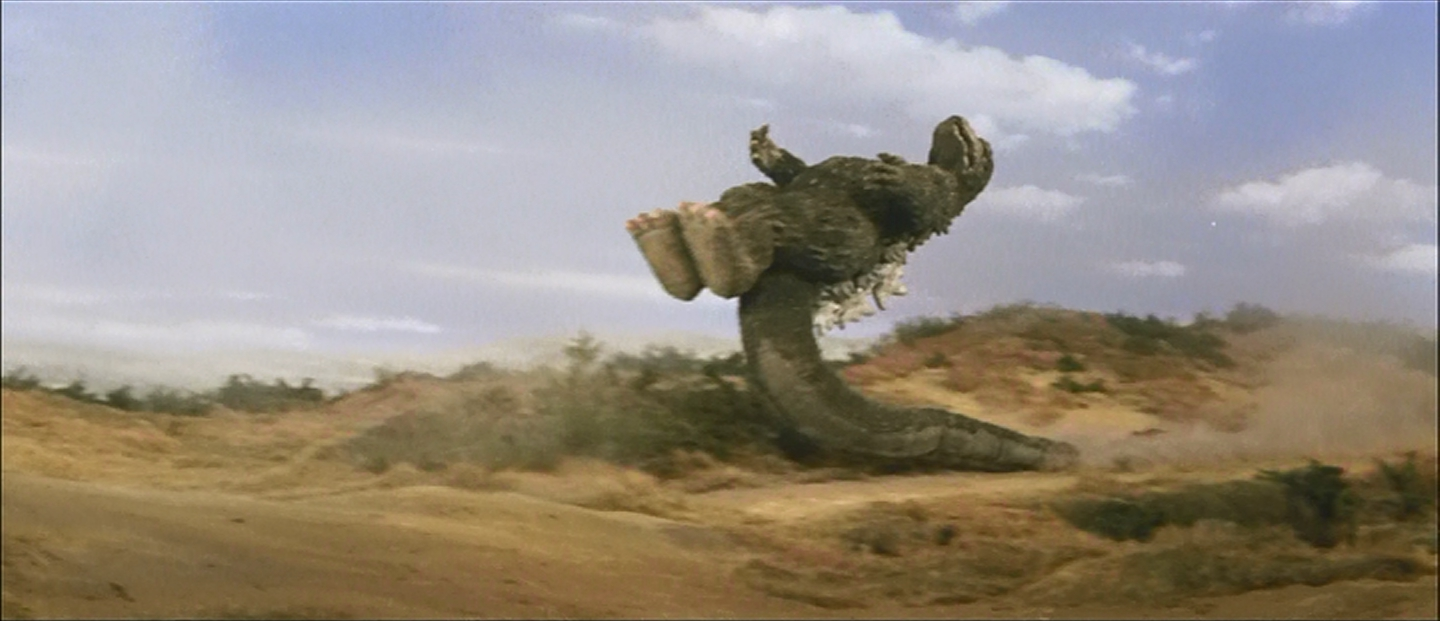
Following an attack in which Hamas killed more than 1,200 Israelis and took an estimated 199 hostage, Israel has retaliated by killing thousands of Palestinians; cutting off water, fuel, and electricity; and ordering over 1.1 million citizens to evacuate from North Gaza. Amid the violence, death, an...

>Following an attack in which Hamas killed more than 1,200 Israelis and took an estimated 199 hostage, Israel has retaliated by killing thousands of Palestinians; cutting off water, fuel, and electricity; and ordering over 1.1 million citizens to evacuate from North Gaza. Amid the violence, death, and countless violations of the Geneva conventions, The Onion asked Americans how they are ignoring the conflict between Israel and Hamas, and this is what they said.
WASHINGTON—Hoping to bring all sides of the issue together, moderate politician Rep. Martin Danforth (D-OH) told reporters Friday that he believed Israel should only kill half of the Palestinians. “This war is a complex issue with valid points across the ideological spectrum, which is why it’s imper...

Dianne Feinstein, who served as a senator of California since 1992, died Thursday night at the age of 90. The Onion looks back at 31 years of Feinstein becoming elderly while in office.

>Dianne Feinstein, who served as a senator of California since 1992, died Thursday night at the age of 90. The Onion looks back at 31 years of Feinstein becoming elderly while in office.
Monopolies is the eventual transformation of all industries in capitalism, as Lenin writes in his book Imperialism, the Highest Stage of Capitalism, their monopolization lets wage more power than by being alone, like for example a more effective way to crackdown on their workers by being the only option, here we see then joining together to have more lobbng power but we will see in the future more organization and cooperation between the streaming giants and then eventual corporate mergers like it happen to the Airlines in the USA
WASHINGTON—Following hours of meetings with lawmakers to try to shore up U.S. support for his country, Ukrainian President Volodymyr Zelensky reportedly grabbed whatever office supplies he could get his hands on in the Capitol Thursday, saying he needed them for war. “We really need a bunch of these...

>WASHINGTON—Following hours of meetings with lawmakers to try to shore up U.S. support for his country, Ukrainian President Volodymyr Zelensky reportedly grabbed whatever office supplies he could get his hands on in the Capitol Thursday, saying he needed them for war. “We really need a bunch of these staplers for the war effort,” said the Ukrainian leader, snatching up dozens of black Swingline staplers and adding them to a growing armful of paper clips, tape dispensers, and rubber bands that he had already swiped from Senate Majority Leader Chuck Schumer’s desk as they wrapped up a private conversation earlier this afternoon. “We’re nearing the two-year mark in this war with no major breakthroughs and a vast deficit in printer paper that is quickly being depleted by all the, uh, war plans and stuff. That’s why we need your continued financial support, as well as any of these binder clips you have lying around, to clamp onto Russian forces. Look, our brave men are on the front lines as we speak, fighting for their lives and their country without stacks of manila folders they can stand on to get a better view of the enemy. But with your help, and this half-empty bottle of nondairy powdered creamer, we may stand a chance after all.” At press time, Zelensky admitted he stole the extra toilet paper rolls from the bathroom because it would be super annoying to stop at the store on his way home.
Here in México is Nuevo León for sure,
its a custom emote, some instances like hexbear have them
Counting from my first account almost 4 years, a bit over 3 year on this one
they are literally making the Blue Division again

The pineapple (Ananas comosus) is a tropical plant with an edible fruit; it is the most economically significant plant in the family Bromeliaceae.
The pineapple is indigenous to South America, where it has been cultivated for many centuries. The introduction of the pineapple to Europe in the 17th century made it a significant cultural icon of luxury. Since the 1820s, pineapple has been commercially grown in greenhouses and many tropical plantations.
Pineapples grow as a small shrub; the individual flowers of the unpollinated plant fuse to form a multiple fruit. The plant normally propagates from the offset produced at the top of the fruit or from a side shoot, and typically matures within a year
History
Etymology
The first reference in English to the pineapple fruit was the 1568 translation from the French of André Thevet's The New Found World, or Antarctike where he refers to a Hoyriri, a fruit cultivated and eaten by the Tupinambá people, living near modern Rio de Janeiro, and now believed to be a pineapple. Later in the same English translation, he describes the same fruit as a "Nana made in the manner of a Pine apple", where he used another Tupi word nanas, meaning 'excellent fruit'. This usage was adopted by many European languages and led to the plant's scientific binomial Ananas comosus, where comosus 'tufted', refers to the stem of the plant. Purchas, writing in English in 1613, referred to the fruit as Ananas, but the Oxford English Dictionary's first record of the word pineapple itself by an English writer is by Mandeville in 1714
Precolonial cultivation
The wild plant originates from the Paraná–Paraguay River drainages between southern Brazil and Paraguay. Little is known about its domestication, but it spread as a crop throughout South America. Archaeological evidence of use is found as far back as 1200 – 800 BC (3200–2800 BP) in Peru and 200BC – AD700 (2200–1300 BP) in Mexico, where it was cultivated by the Mayas and the Aztecs. By the late 1400s, cropped pineapple was widely distributed and a staple food of Native Americans. The first European to encounter the pineapple was Columbus, in Guadeloupe on 4 November 1493. The Portuguese took the fruit from Brazil and introduced it into India by 1550. The 'Red Spanish [es]' cultivar was also introduced by the Spanish from Latin America to the Philippines, and it was grown for textile use from at least the 17th century.
Columbus brought the plant back to Spain and called it piña de Indes, meaning "pine of the Indians". The pineapple was documented in Peter Martyr's Decades of the New World (1516) and Antonio Pigafetta's Relazione del primo viaggio intorno al mondo (1524-1525), and the first known illustration was in Oviedo's Historia General de Las Indias (1535)
Old World introduction
The pineapple fascinated Europeans as a fruit of colonialism. But it was not successfully cultivated in Europe until Pieter de la Court developed greenhouse horticulture near Leiden from about 1658. Pineapple plants were distributed from the Netherlands to English gardeners in 1719 and French ones in 1730. In England, the first pineapple was grown at Dorney Court, Dorney in Buckinghamshire, and a huge "pineapple stove" to heat the plants was built at the Chelsea Physic Garden in 1723. In France, King Louis XV was presented with a pineapple that had been grown at Versailles in 1733. In Russia, Peter the Great imported de le Court's method into St. Petersburg in the 1720s; in 1730, 20 pineapple saplings were transported from there to a greenhouse at Empress Anna's new Moscow palace.
Because of the expense of direct import and the enormous cost in equipment and labour required to grow them in a temperate climate, in greenhouses called "pineries", pineapple became a symbol of wealth. They were initially used mainly for display at dinner parties, rather than being eaten, and were used again and again until they began to rot. In the second half of the 18th century, the production of the fruit on British estates became the subject of great rivalry between wealthy aristocrats. John Murray, 4th Earl of Dunmore, built a hothouse on his estate surmounted by a huge stone cupola 14 metres tall in the shape of the fruit; it is known as the Dunmore Pineapple. In architecture, pineapple figures became decorative elements symbolizing hospitality.
Since 19th century: mass commercialization
Many different varieties, mostly from the Antilles, were tried for European glasshouse cultivation. The most significant was "Smooth Cayenne", imported to France in 1820, subsequently re-exported to the United Kingdom in 1835, and then from the UK via Hawaii `to Australia and Africa. "Smooth Cayenne" is now the dominant cultivar in world production. Jams and sweets based on pineapple were imported to Europe from the West Indies, Brazil, and Mexico from an early date. By the early 19th century, fresh pineapples were transported direct from the West Indies in large enough quantities to reduce European prices. Later pineapple production was dominated by the Azores for Europe, and Florida and the Caribbean for North America, because of the short trade routes.
The Spanish had introduced the pineapple into Hawaii in the 18th century where it is known as the hala kahiki ("foreign hala"), but the first commercial plantation was established in 1886. The most famous investor was James Dole, who moved to Hawaii in 1899 and started a 24-hectare (60-acre) pineapple plantation in 1900 which would grow into the Dole Food Company. Dole and Del Monte began growing pineapples on the island of Oahu in 1901 and 1917, respectively, and the Maui Pineapple Company began cultivation on Maui in 1909. James Dole began the commercial processing of pineapple, and Dole employee Henry Ginaca invented an automatic peeling and coring machine in 1911.
Hawaiian production started to decline from the 1970s because of competition and the shift to refrigerated sea transport. Dole ceased its cannery operations in Honolulu in 1991, and in 2008, Del Monte terminated its pineapple-growing operations in Hawaii. In 2009, the Maui Pineapple Company reduced its operations to supply pineapples only locally on Maui, and by 2013, only the Dole Plantation on Oahu grew pineapples in a volume of about 0.1 percent of the world's production. Despite this decline, the pineapple is sometimes used as a symbol of Hawaii. Further, foods with pineapple in them are sometimes known as "Hawaiian" for this reason alone.
In the Philippines, "Smooth Cayenne" was introduced in the early 1900s by the US Bureau of Agriculture during the American colonial period. Dole and Del Monte established plantations in the island of Mindanao in the 1920s; in the provinces of Cotabato and Bukidnon, respectively. Large scale canning had started in Southeast Asia, including in the Philippines, from 1920. This trade was severely damaged by World War II, and Hawaii dominated the international trade until the 1960s.
The Philippines remain one of the top exporters of pineapples in the world.
Megathreads and spaces to hang out:
- ❤️ Come listen to music and Watch movies with your fellow Hexbears nerd, in Cy.tube
- 💖 Come talk in the New Weekly Queer thread
- 💛 Read and talk about a current topics in the News Megathread
- ⭐️ August Movie Nominations ⭐️
reminders:
- 💚 You nerds can join specific comms to see posts about all sorts of topics
- 💙 Hexbear’s algorithm prioritizes comments over upbears
- 💜 Sorting by new you nerd
- 🌈 If you ever want to make your own megathread, you can reserve a spot here nerd
- 🐶 Join the unofficial Hexbear-adjacent Mastodon instance toots.matapacos.dog
Links To Resources (Aid and Theory):
Aid:
Theory:
now all fediverse discussion will be considered a current struggle session discussion and all comment about it are subject to be removed and even banning from the comm.
have all of you a good day/night !meow-coffee

An orange is a fruit of various citrus species in the family Rutaceae (see list of plants known as orange); it primarily refers to Citrus × sinensis,[1] which is also called sweet orange, to distinguish it from the related Citrus × aurantium, referred to as bitter orange. The sweet orange reproduces asexually (apomixis through nucellar embryony); varieties of the sweet orange arise through mutations.
The orange is a hybrid between pomelo (Citrus maxima) and mandarin (Citrus reticulata). The chloroplast genome, and therefore the maternal line, is that of pomelo. The sweet orange has had its full genome sequenced.
The orange originated in a region encompassing Southern China, Northeast India, and Myanmar, and the earliest mention of the sweet orange was in Chinese literature in 314 BC. As of 1987, orange trees were found to be the most cultivated fruit tree in the world. Orange trees are widely grown in tropical and subtropical climates for their sweet fruit. The fruit of the orange tree can be eaten fresh, or processed for its juice or fragrant peel. As of 2012, sweet oranges accounted for approximately 70% of citrus production.
In 2019, 79 million tonnes of oranges were grown worldwide, with Brazil producing 22% of the total, followed by China and India.
History
The sweet orange is not a wild fruit, having arisen in domestication from a cross between a non-pure mandarin orange and a hybrid pomelo that had a substantial mandarin component. Since its chloroplast DNA is that of pomelo, it was likely the hybrid pomelo, perhaps a BC1 pomelo backcross, that was the maternal parent of the first orange. Based on genomic analysis, the relative proportions of the ancestral species in the sweet orange are approximately 42% pomelo and 58% mandarin. All varieties of the sweet orange descend from this prototype cross, differing only by mutations selected for during agricultural propagation. Sweet oranges have a distinct origin from the bitter orange, which arose independently, perhaps in the wild, from a cross between pure mandarin and pomelo parents. The earliest mention of the sweet orange in Chinese literature dates from 314 BC.
In Europe, the Moors introduced the orange to the Iberian Peninsula, which was known as Al-Andalus, with large-scale cultivation starting in the 10th century, as evidenced by complex irrigation techniques specifically adapted to support orange orchards. Citrus fruits—among them the bitter orange—were introduced to Sicily in the 9th century during the period of the Emirate of Sicily, but the sweet orange was unknown until the late 15th century or the beginnings of the 16th century, when Italian and Portuguese merchants brought orange trees into the Mediterranean area. Shortly afterward, the sweet orange quickly was adopted as an edible fruit. It was considered a luxury food grown by wealthy people in private conservatories, called orangeries. By 1646, the sweet orange was well known throughout Europe. Louis XIV of France had a great love of orange trees and built the grandest of all royal Orangeries at the Palace of Versailles. At Versailles, potted orange trees in solid silver tubs were placed throughout the rooms of the palace, while the Orangerie allowed year-round cultivation of the fruit to supply the court. When Louis condemned his finance minister, Nicolas Fouquet, in 1664, part of the treasures that he confiscated were over 1,000 orange trees from Fouquet's estate at Vaux-le-Vicomte.
Spanish travelers introduced the sweet orange to the American continent. On his second voyage in 1493, Christopher Columbus may have planted the fruit on Hispaniola. Subsequent expeditions in the mid-1500s brought sweet oranges to South America and Mexico, and to Florida in 1565, when Pedro Menéndez de Avilés founded St Augustine. Spanish missionaries brought orange trees to Arizona between 1707 and 1710, while the Franciscans did the same in San Diego, California, in 1769. An orchard was planted at the San Gabriel Mission around 1804, and a commercial orchard was established in 1841 near present-day Los Angeles. In Louisiana, oranges were probably introduced by French explorers.
Archibald Menzies, the botanist and naturalist on the Vancouver Expedition, collected orange seeds in South Africa, raised the seedlings onboard, and gave them to several Hawaiian chiefs in 1792. Eventually, the sweet orange was grown in wide areas of the Hawaiian Islands, but its cultivation stopped after the arrival of the Mediterranean fruit fly in the early 1900s.
As oranges are rich in vitamin C and do not spoil easily, during the Age of Discovery, Portuguese, Spanish, and Dutch sailors planted citrus trees along trade routes to prevent scurvy.
Florida farmers obtained seeds from New Orleans around 1872, after which orange groves were established by grafting the sweet orange on to sour orange rootstocks.
Megathreads and spaces to hang out:
- ❤️ Come listen to music and Watch movies with your fellow Hexbears nerd, in Cy.tube
- 💖 Come talk in the New Weekly Queer thread
- 💛 Read and talk about a current topics in the News Megathread
- ⭐️ August Movie Nominations ⭐️
reminders:
- 💚 You nerds can join specific comms to see posts about all sorts of topics
- 💙 Hexbear’s algorithm prioritizes comments over upbears
- 💜 Sorting by new you nerd
- 🌈 If you ever want to make your own megathread, you can reserve a spot here nerd
- 🐶 Join the unofficial Hexbear-adjacent Mastodon instance toots.matapacos.dog
Links To Resources (Aid and Theory):
Aid:
Theory:
now all fediverse discussion will be considered a current struggle session discussion and all comment about it are subject to be removed and even banning from the comm.
have all of you a good day/night !meow-coffee
they must be running out of manpower

Xiang Jingyu, born on this day in 1895, was one of the earliest female members of the Communist Party of China (CPC) and a pioneer of the women's movement of China. She was executed by Guomindang police on May 1st, 1928.
Xiang Jingyu was politically radicalized when she attended the Montargis Women's University in France. While studying there, Jingyu read many of Marx's works and became a communist.
In 1923, Xiang became editor of a weekly supplement to The Republican Daily, a Guomindang newspaper. The same year Xiang Jingyu was also elected as a Central Committee member and became the first secretary of the "Women's Movement Committee".
In 1924, Xiang led a strike involving about ten thousand female workers from silk factories. Then, she founded the "Committee of Women's Liberation" and trained many female cadres, who then became a force against feudalism and imperialism.
Xiang Jingyu was arrested in the French Concession Sandeli in Wuhan on March 20th, 1928. French officials turned her over to the Guomindang in April. On May 1st, 1928 she was executed.
Megathreads and spaces to hang out:
- ❤️ Come listen to music and Watch movies with your fellow Hexbears nerd, in Cy.tube
- 💖 Come talk in the New Weekly Queer thread
- 💛 Read and talk about a current topics in the News Megathread
- ⭐️ August Movie Nominations ⭐️
reminders:
- 💚 You nerds can join specific comms to see posts about all sorts of topics
- 💙 Hexbear’s algorithm prioritizes comments over upbears
- 💜 Sorting by new you nerd
- 🌈 If you ever want to make your own megathread, you can reserve a spot here nerd
- 🐶 Join the unofficial Hexbear-adjacent Mastodon instance toots.matapacos.dog
Links To Resources (Aid and Theory):
Aid:
Theory:
now all fediverse discussion will be considered a current struggle session discussion and all comment about it are subject to be removed and even banning from the comm.
have all of you a good day/night !meow-coffee
What good would an Apology from the USA do to us?
it wont bring back the dead nor heal the pain it cause to many families who's only crime was having a family member voting for the wrong party in the USA's eyes. It wont stop the corruption or the organzed crime the US supported for decades, heck even today they still medley in our affairs, in Haiti in 2004, In 2009 honduras, they tried to start a war in Venezuela with a bunch of mercenaries, they backed a coup in boliva against Evo, they supported and backed people like bolsonaro who did a genocide in the amazon, and to this day they still continue the blockade of Cuba.
there would be no good from an apology because they dont mean it, Democrats are just as imperialist as Republicans, and no amount of DSA members will change that.
its better to be safe, than to risk it with the spammers, hopefully this matter will get resolved quickly
Its been fine, there been more comments from users of a lets say diferent vibe from hexbear common culture but there been positive interactions from instances like lemmygrad, lemmy.ml, midwestsocial, blahaj zone and some others.
Over all i say federation has been a positive change for Hexbear, it gives us more slop in many ways
Yey c/indigenous 
On the bright side, it makes people go to other instances instead of centralizing most the lemmy users on one big one

YouTube Video
Click to view this content.
>A dragon, a witch and a trickster walk into a bar...
Baba yaga Legendary lord!!! A new dragon lord and the Changeling??
looks like a great lord pack
HEY LEMMY NERDS, IF STALIN IS SO GOOD, EXPLAIN THIS








